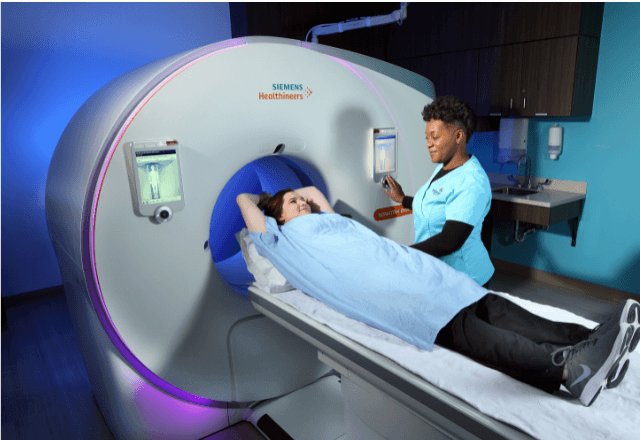Portable Radiography Testing in Farm Animals
The use of portable radiography testing in farm animals has gained significant traction due to its ability to provide quick, accurate diagnostics without the need for specialized facilities. This service is particularly advantageous in remote and mobile veterinary practices where traditional stationary radiographic equipment may not be readily available or cost-effective.
Portable radiography systems are designed with mobility in mind, allowing them to function effectively on-site at farms, reducing the stress on animals caused by transportation to a clinic. These machines typically feature lightweight designs and compact sizes that can easily fit into vehicles like vans or trucks, making them ideal for fieldwork.
The technology employed ensures high-quality images comparable to those produced by stationary units found in hospitals. By leveraging advanced imaging techniques such as digital radiography (DR), veterinarians can obtain clear views of bones, organs, and soft tissues. This enables precise diagnosis of various conditions ranging from fractures and dislocations to internal injuries or infections.
For quality managers responsible for ensuring the health standards within their livestock operations, portable radiography offers a valuable tool for proactive monitoring. It allows them to identify potential issues early on, thereby preventing costly losses due to untreated ailments. Compliance officers will appreciate how this service helps maintain regulatory compliance through regular screenings that ensure animal welfare.
R&D engineers looking into improving diagnostic tools can benefit from understanding the limitations and advantages of portable radiography compared to stationary alternatives. For procurement teams involved in sourcing new equipment, familiarity with these systems’ specifications would aid in selecting appropriate models based on specific farm needs.
When preparing specimens for examination via portable radiography, it’s important that they remain still during exposure. Animals should be gently restrained using humane methods suitable for each species to ensure optimal image quality without causing distress.
The instrumentation used includes a combination of the portable X-ray machine itself along with a detector panel connected wirelessly or through cables depending on the model chosen. Reporting involves capturing clear images which are then analyzed by radiologists who provide detailed reports outlining findings and recommendations for treatment if necessary.
Environmental and Sustainability Contributions
The adoption of portable radiography testing in farm animals aligns well with broader sustainability goals within the agricultural sector. By minimizing the need to transport sick or injured animals long distances, this service helps reduce carbon emissions associated with vehicle travel. Additionally, it promotes more efficient use of resources by enabling faster diagnosis and treatment, potentially leading to shorter recovery times.
From an environmental perspective, portable radiography contributes positively by reducing waste generated from unnecessary trips to clinics. It also supports sustainable farming practices by improving animal health management which can lead to reduced antibiotic usage where appropriate treatments are promptly administered.
Competitive Advantage and Market Impact
The implementation of portable radiography testing provides farms with a competitive edge in terms of operational efficiency. With quicker access to diagnostic information, veterinarians can more effectively manage health issues among livestock populations. This not only enhances productivity but also improves overall animal welfare.
For quality managers and compliance officers, having reliable on-site diagnostic capabilities ensures consistent adherence to best practices and regulatory requirements without disrupting regular operations. This translates into better reputation management as farms demonstrate their commitment to maintaining high standards of care for their animals.
R&D engineers involved in developing new technologies or improving existing ones within the veterinary field may find portable radiography a significant area ripe for innovation. Engineers specializing in electronics, software development, and materials science could explore ways to enhance image resolution further while keeping the devices lightweight and durable.
Procurement teams can leverage this service when evaluating suppliers offering portable X-ray machines tailored specifically for agricultural applications. Looking at factors like ease of use, reliability under challenging conditions, longevity, and compatibility with existing equipment helps ensure long-term value from investments made in such technology.
Use Cases and Application Examples
- Falls Detection: Farmers can quickly identify if a fall has caused any bone fractures or internal injuries without stressing the animal by transporting it to a clinic.
- Infectious Disease Monitoring: Regular screening using portable radiography helps detect early signs of infectious diseases, allowing for prompt isolation and treatment before they spread further within the herd.
- Pain Management: Veterinarians can assess injuries like sprains or strains without causing additional pain to the animal during transportation by performing on-site examinations.
| Use Case | Description |
|---|---|
| Falls Detection | Detects fractures and internal injuries resulting from falls without stress for the animal. |
| Infectious Disease Monitoring | Identifies early signs of infectious diseases to prevent spread within the herd. |
| Pain Management | Assesses sprains or strains on-site, minimizing further pain to the animal during transportation. |





